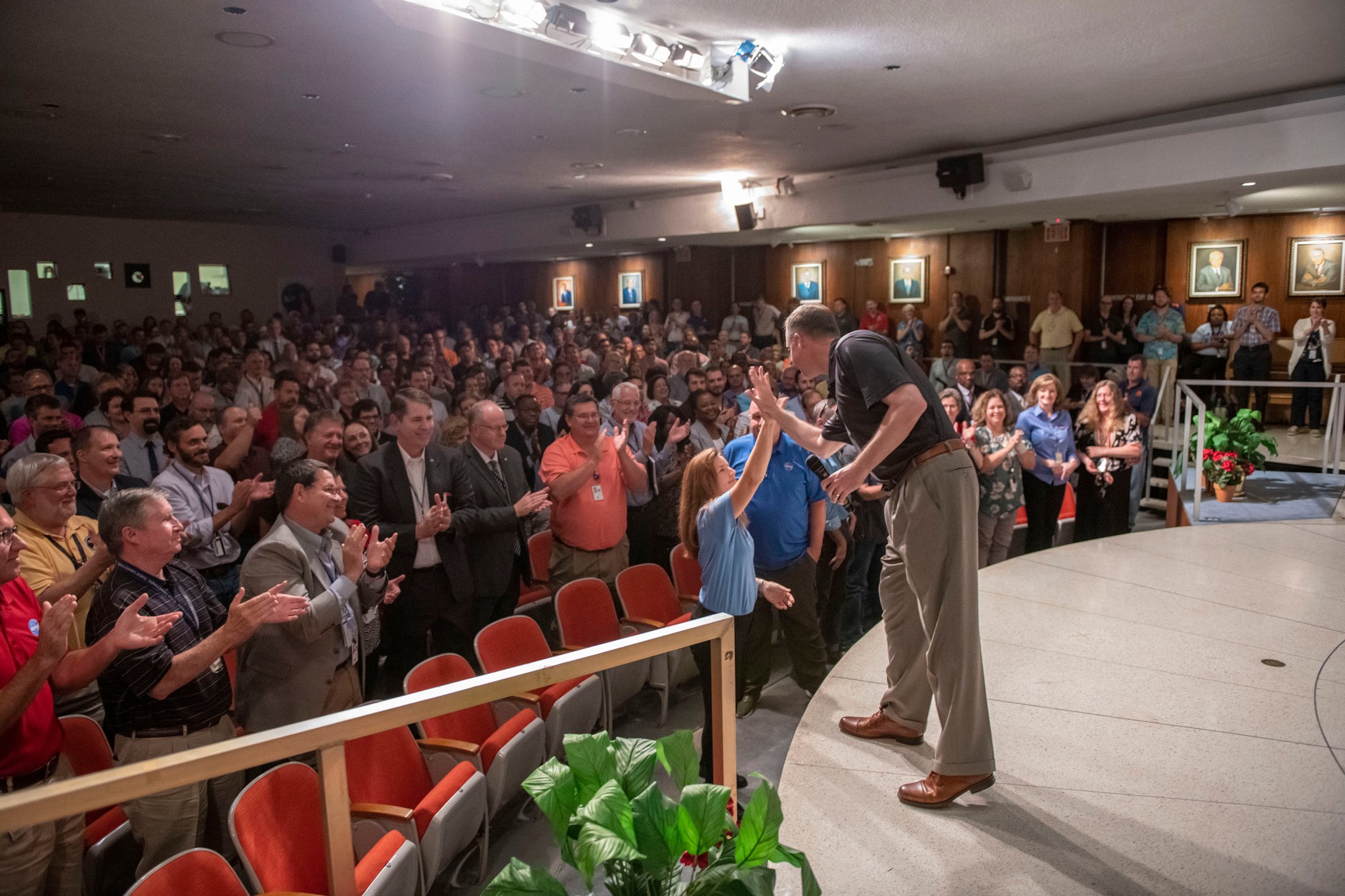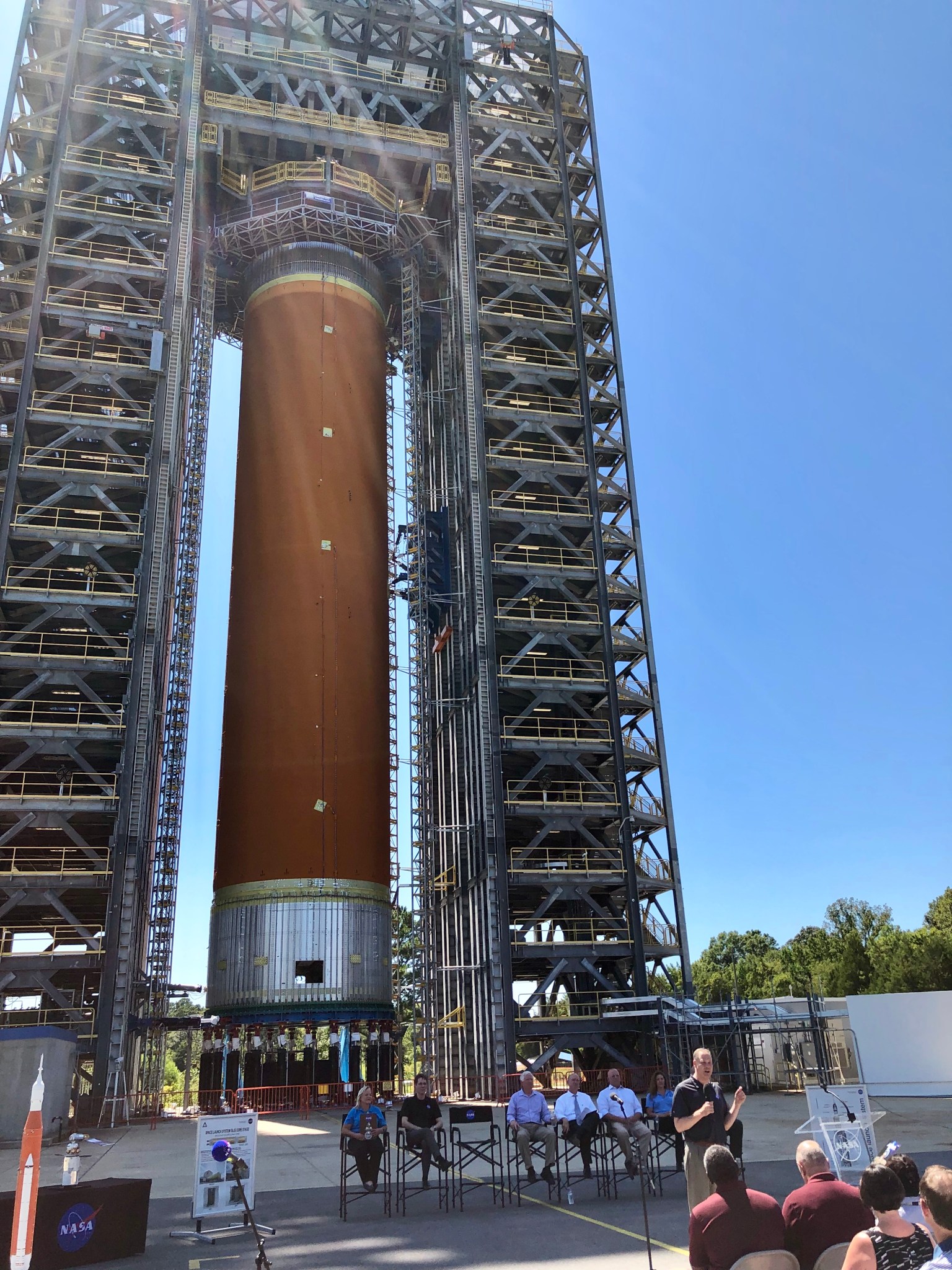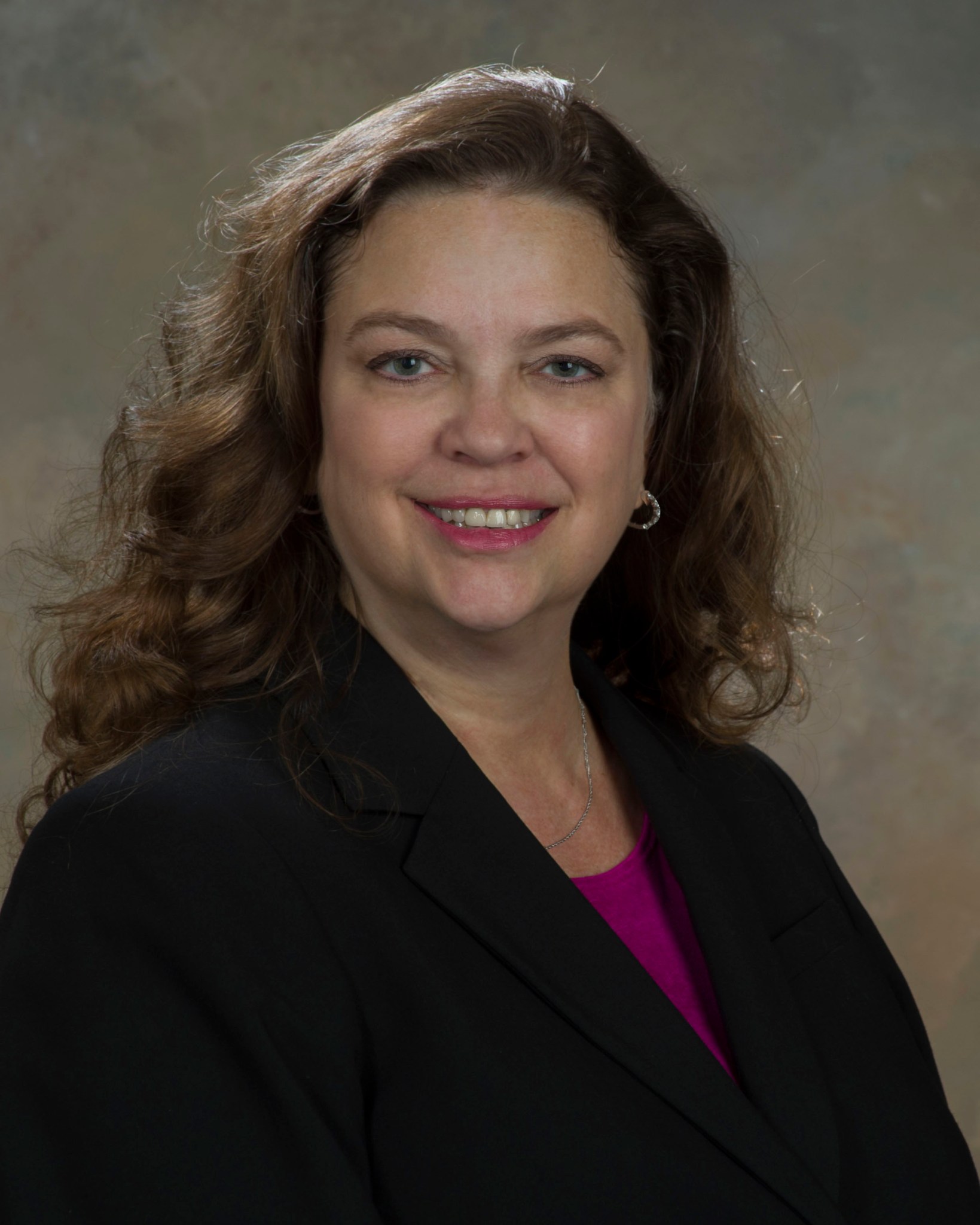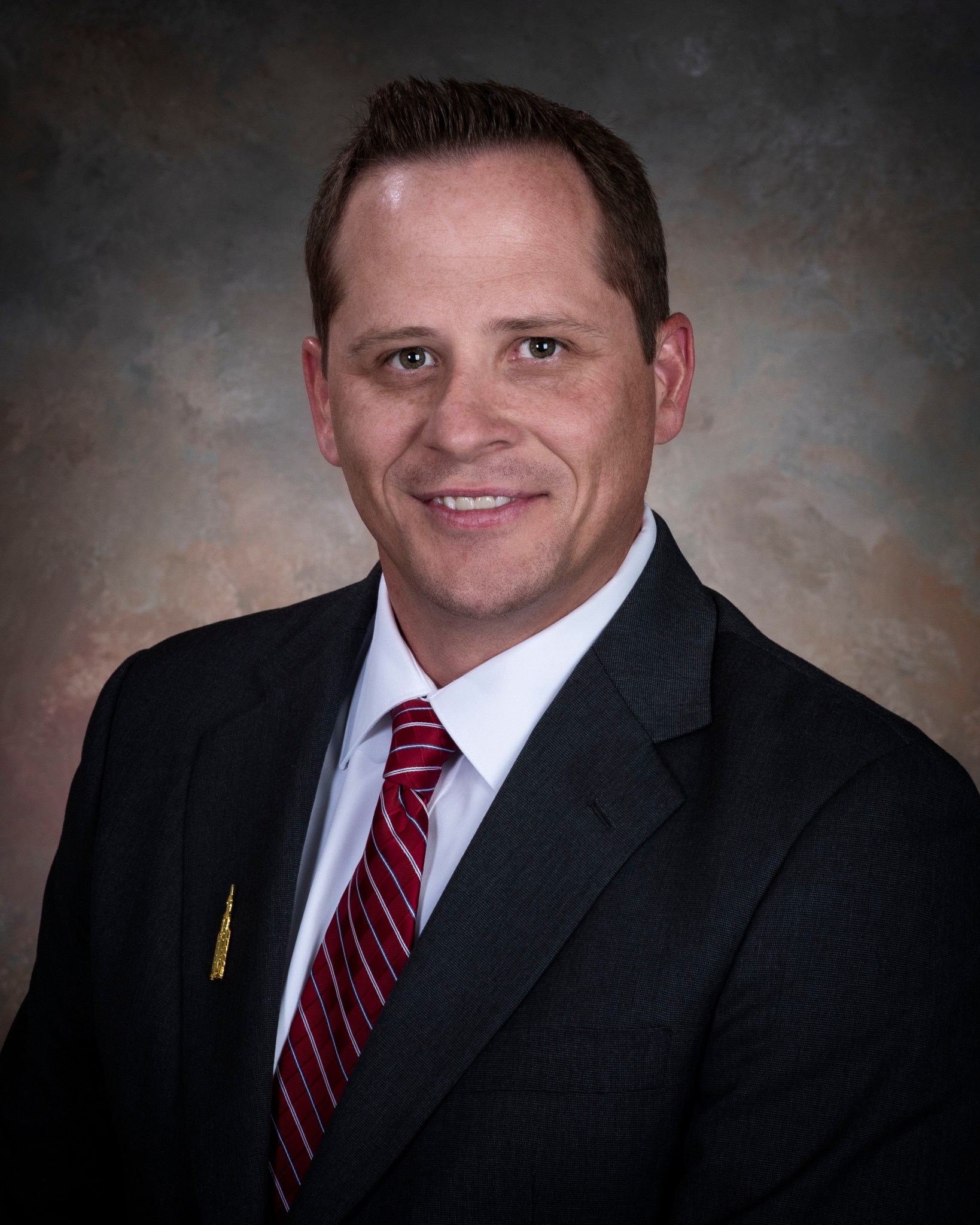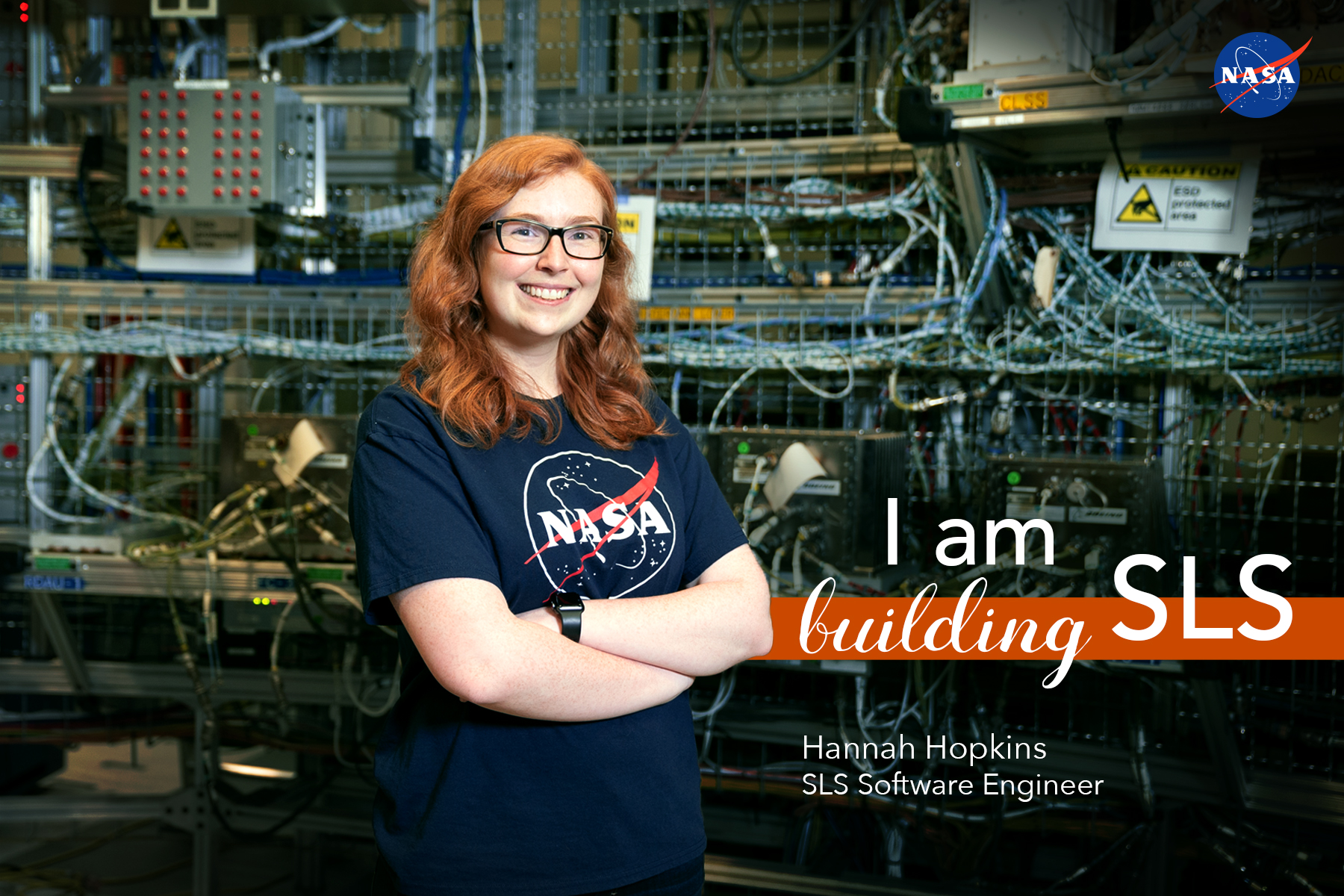In This Week’s Star
- NASA Selects Marshall to lead Human Landing System Development
- Ginger Flores Named Manager of the Habitation Systems Development Office
- Joel Broome Named SLS Lead Engineer for Systems Analysis and Integration
- NASA Glenn Director Janet Kavandi Delivers Shared Experiences Talk at Marshall
- I Am Building SLS: Hannah Hopkins
- Marshall Center Chief Technologist John Dankanich Gives Tech Talk
- This Week in NASA History: Large 3-D Printed Rocket Injector Successfully Test-fired – Aug. 22, 2013
NASA Selects Marshall to lead Human Landing System Development
By Daniel Boyette
NASA’s Marshall Space Flight Center now has another important role in the agency’s mission to return humans to the Moon by 2024.
Marshall, which already manages NASA’s Space Launch System, was announced as the lead center for the agency’s Human Landing System Program during an Aug. 16 press conference in front of the 149-foot-tall SLS liquid hydrogen tank structural test article at Marshall. The news came on the heels of Marshall’s Lisa Watson-Morgan being named program manager of the Human Landing System.
“This is Rocket City. What happens here is important for our country,” said NASA Administrator Jim Bridenstine, who was joined for the announcement by U.S. Representatives Mo Brooks and Robert Aderholt of Alabama, and Scott DesJarlais of Tennessee.
“This decision was not made lightly,” Bridenstine said. “Marshall has done hard work with landing systems for more than 10 years. The program that will be managed here in North Alabama is going to land the first woman on the south pole of the Moon, and that landing system is being managed by Lisa Watson-Morgan, one of NASA’s best engineers. She just so happens to be a woman — what a great American story.”
Marshall engineers, who have years of expertise in propulsion systems integration and technology development, will work with American companies to rapidly develop, integrate and demonstrate a human lunar landing system that can launch to the Gateway, a small spaceship in lunar orbit, pick up astronauts and ferry them between the Gateway and the surface of the Moon.
“Most conception designs require three elements: a transfer module, a lander and an ascent module,” Bridenstine said. “Two of those elements are highly focused on propulsion. When it comes to propulsion, there is no place in the world more experienced or better than Marshall.”
NASA’s Johnson Space Center will oversee all aspects related to preparing the landers and astronauts to work together. Other agency centers will contribute in their areas of expertise to ensure that the lunar landing system is a success.
“We’ve partnered extensively with all the other NASA centers over the years and we intend to keep doing that, because that’s how we bring out the best,” Watson-Morgan said. “We’re going to do this with an industry-led concept. We plan to collaborate with industry, bringing their speed and our experience to have the best team to make the 2024 goal. It ought to be quite exciting.”
With the start of testing in June for the liquid hydrogen tank article, and the recent arrival of the last structural test article, the liquid oxygen tank, to Marshall, NASA is more than halfway through SLS structural testing.
“From launching astronauts to the Moon with the Space Launch System rocket to landing them safely on the lunar surface with a new human landing system, Marshall is taking human exploration of space to the next level,” Paul McConnaughey, Marshall’s deputy director, told the gathering.
Bridenstine’s trip to Marshall came the day after he visited NASA’s Michoud Assembly Facility, where he viewed progress on the core stage of the SLS rocket that will power NASA’s Artemis 1 lunar mission. The core stage is almost finished, and engineers will soon add the last structure, the engine section.
“We’re confident that when we land on the Moon in 2024, it will be because the SLS rocket has made so much amazing progress,” Bridenstine told Marshall team members during an all-hands meeting in Building 4200 following his press conference. “There are a lot of people in this room who have worked exceptionally hard to help make that a reality. I want you to know that I am grateful, NASA leadership is grateful and the country is grateful, because when we go to the Moon, it’s going to be something that all of America is very, very proud of.”
Boyette, an ASRC Federal/Analytical Services employee and Marshall Star editor, supports the Office of Strategic Analysis & Communications.
Ginger Flores Named Manager of the Habitation Systems Development Office
Ginger Flores has been named to the Senior Executive Service position of manager of the Habitation Systems Development Office in the Human Exploration Development and Operations Office at NASA’s Marshall Space Flight Center.
The SES is the personnel system covering most of the top managerial positions in federal agencies. Flores will lead all efforts associated with the management and technical integration of Gateway activities assigned to Marshall, including the U.S. Habitat Module and habitation system technologies under the Next Space Technologies for Exploration Partnerships (NextSTEP) Program.
Flores began her NASA career at Marshall in 2002 as a lead cost engineer in the Systems Management Office where she developed independent engineering cost estimates of launch vehicles, manned space vehicles, robotic spacecraft, projects and programs. Between 2003 and 2006, she was project manager for Lab-On-a-Chip Application Development and was responsible for managing the technology demonstration project from formulation to operations.
In 2006, Flores was named associate project manager of the Orion Crew Exploration Vehicle Service Module Element, where she was responsible for planning, directing and implementing all Marshall activities and deliverables in support of the Glenn Research Center Service Module Project Office. In July 2007, she was detailed to NASA Headquarters as executive officer to the associate administrator for Program Analysis and Evaluation.
Flores returned to Marshall in February 2008 as manager of the Microgravity Science Glovebox Project. She was responsible for the payload integration and testing, hardware development, operations and sustaining engineering of the glovebox facility on the International Space Station. From 2011 to 2015, she was lead of the station’s Payload Projects Team, providing management of the design, development, integration, test, evaluation and operations for flight and ground hardware for multiple payload projects and facilities.
As acting deputy manager of the International Space Station Office from 2015 to 2016, Flores was responsible for implementing and managing station vehicle and payload projects, including the Life Support Systems Project, the Environmental Control and Life Support Systems Project, payload research facilities and materials science and biophysics research/payload development. From 2016 to 2018, she was manager of the Technology Demonstration Missions Program Office where she oversaw a portfolio of 15 flight and ground technology projects. She has served as acting Habitation Element manager since September 2018.
Prior to her NASA career, Flores worked at Molex Inc., SAIC, Teledyne Advanced Materials and Adtran in a variety of engineering and leadership positions. She was also a graduate research assistant at the University of Alabama in Huntsville and an industrial engineering student trainee at Marshall for three years.
A native of Huntsville, Flores received a bachelor’s and master’s degree in industrial and systems engineering from UAH in 1993 and 1998, respectively. She has received many awards for her service to NASA, including two NASA Silver Achievement Medals, a NASA Outstanding Leadership Medal, a Silver Snoopy Award and numerous special service and group achievement awards.
Joel Broome Named SLS Lead Engineer for Systems Analysis and Integration
Joel “Joey” Broome has been appointed lead engineer of Systems Analysis and Integration for NASA’s Space Launch System Program at NASA’s Marshall Space Flight Center.
Broome will oversee all system-level engineering analysis and disciplines for the SLS Program, including vehicle management, structures and environments, propulsion, production and tests for the rocket. In conjunction with his new role, Broome will also manage enterprise-level analysis for Exploration Systems Development to the SLS Program.
He had served since 2015 as the SLS vehicle management discipline lead engineer.
Broome began his career at NASA as an engineering student trainee at Johnson Space Center in 1996. Following his graduation from Auburn University in 1999, he continued his early career at Johnson and has since served in increasingly responsible leadership and technical roles.
Broome joined Marshall in 2009 as part of the Constellation Flight Test Campaign and the SLS Requirements Analysis Cycle 1. In 2011, he was appointed deputy vehicle management discipline lead engineer, responsible for leading development and delivery of all SLS guidance, navigation and control, flight mechanics, natural environments and functional flight software design products in support of the SLS Program. He was also chief of the Integrated System Health Management and Automation Branch, which is responsible for all mission and fault management functional development and supporting analyses.
A native of LaGrange, Georgia, Broome holds a bachelor’s degree in aerospace engineering from Auburn. He has received numerous awards and honors, including a NASA Outstanding Leadership Medal and a Space Flight Awareness Award.
NASA Glenn Director Janet Kavandi Delivers Shared Experiences Talk at Marshall
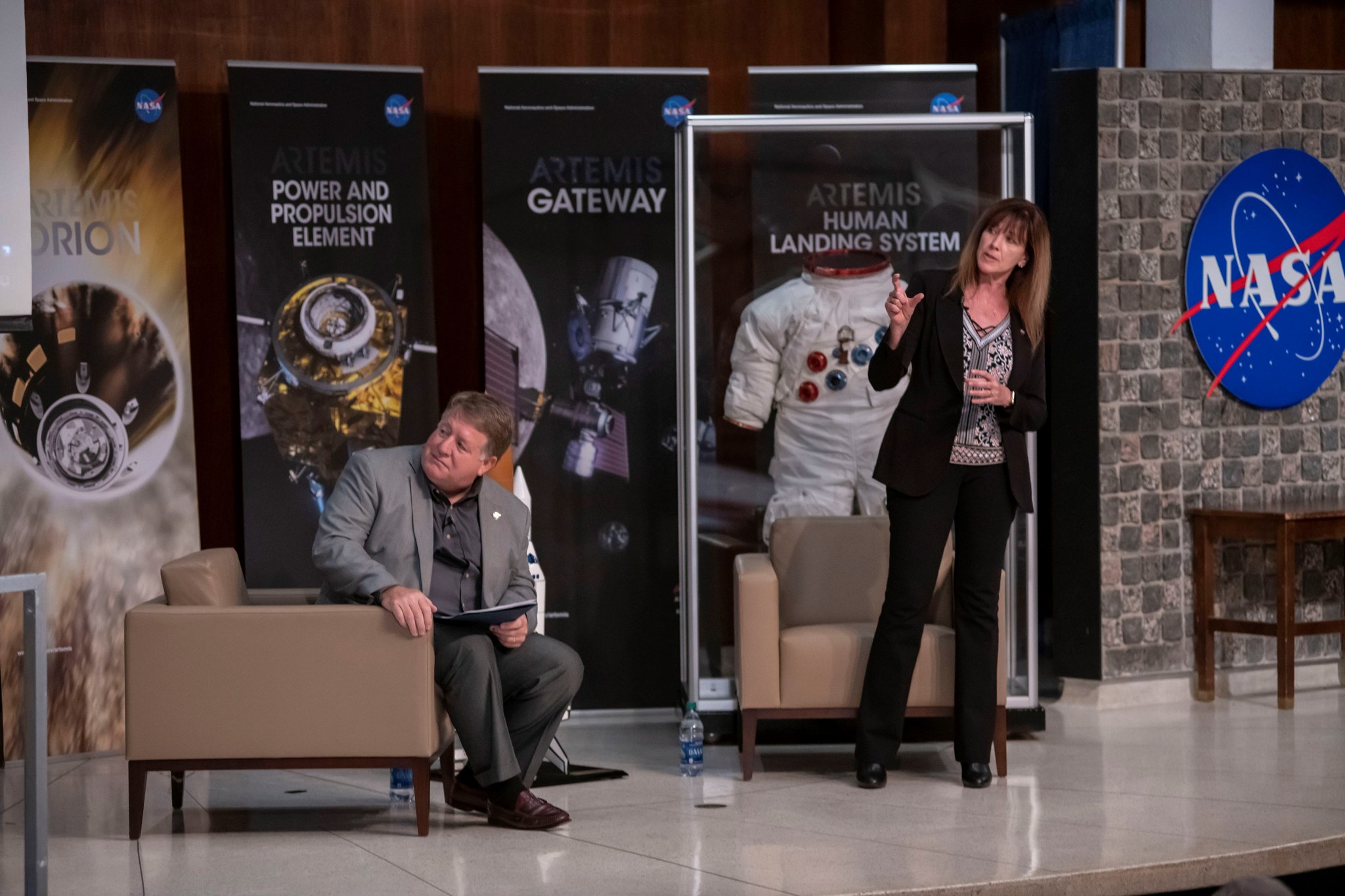
Janet Kavandi, right, director of NASA’s Glenn Research Center, visits NASA’s Marshall Space Flight Center on Aug. 15 for the August Shared Experiences Forum, part of the “Mission Success is in Our Hands” lecture series. The discussion, led by Preston Jones, left, Marshall associate director, technical, covered Kavandi’s vast NASA experiences as a space shuttle astronaut and a leader in the agency. As Glenn’s director, Kavandi oversees the center’s portfolio, which includes partnerships with Marshall on multiple projects, such as nuclear thermal propulsion. Kavandi first visited Marshall as a child, where her uncle worked on the Apollo and Space Shuttle programs. The lecture series — sponsored by Marshall’s Safety & Mission Assurance Directorate and industry partner Jacobs Engineering of Huntsville — is designed to strengthen Marshall’s focus on all aspects of crew, hardware and mission safety. (NASA/Fred Deaton)
I Am Building SLS: Hannah Hopkins
Most people don’t see the work and effort it takes in making a rocket launch, but that’s what I do every day. I have watched NASA’s Space Launch System rocket launch hundreds of times. What I observed was not an actual launch but a simulation used for testing the rocket’s flight software and avionics. Seeing the rocket soar even on the simulation makes me confident that I will see the SLS rocket lift off soon on the Artemis 1 mission to the Moon.
I use my knowledge to look at the framework, or logistics, of running each of the minute details to make sure it all integrates and runs together smoothly. As a software engineer, I write code for the simulation program ARTEMIS — Advanced Real Time Environment for Modeling Integration and Simulation — that runs simulations for the rocket launch and flight. The simulation allows my team at NASA’s Marshall Space Flight Center to fly the rocket virtually thousands of times. These nominal flights test the avionics and software that control the mission from 48 hours before launch through the 10 minutes after the launch of the Artemis 1 mission.
This attention to detail will help ensure a smooth Artemis 1 mission when the 5.75-million-pound SLS rocket leaves Earth and sends Orion to the Moon. When I watch these simulated flights, I feel the same type of excitement for the Artemis missions as I believe the Apollo generation did when Apollo first sent humans to the Moon. Knowing something that I have worked on is going to fly means the world, or the universe, to me. I see myself as a member of the Artemis generation. We are on the cusp of the future of space travel.
The simulation software allowed us to write code for many different scenarios that might occur during an SLS flight. That way we can make sure the flight software and avionics work on launch day under various circumstances. This gives us a better understanding of how the software behaves and helps us prepare for undesirable consequences such as the loss of a flight computer. The rocket has redundant computers and avionics systems that help it navigate in space, so we want to test what happens if one system fails to operate correctly and another system takes over. Of course, we also test to see how the system works when everything goes perfectly as planned. If everything goes as planned, the real rocket will fly into space with no troubles.
Space has been a part of my life ever since I can remember. Growing up, my dance teacher was an extra in the movie “Space Camp,” filmed at the U.S. Space & Rocket Center in Huntsville. Her stories made space exciting and thrilling to me. She, along with my mother’s encouragement, inspired me to attend the University of North Alabama in Florence where I got my undergraduate degree in computer science. I just completed my graduate degree in computer science at Georgia Tech in Atlanta. One day, I will watch my first rocket launch with a smile on my face knowing I helped it get there.
Marshall Center Chief Technologist John Dankanich Gives Tech Talk
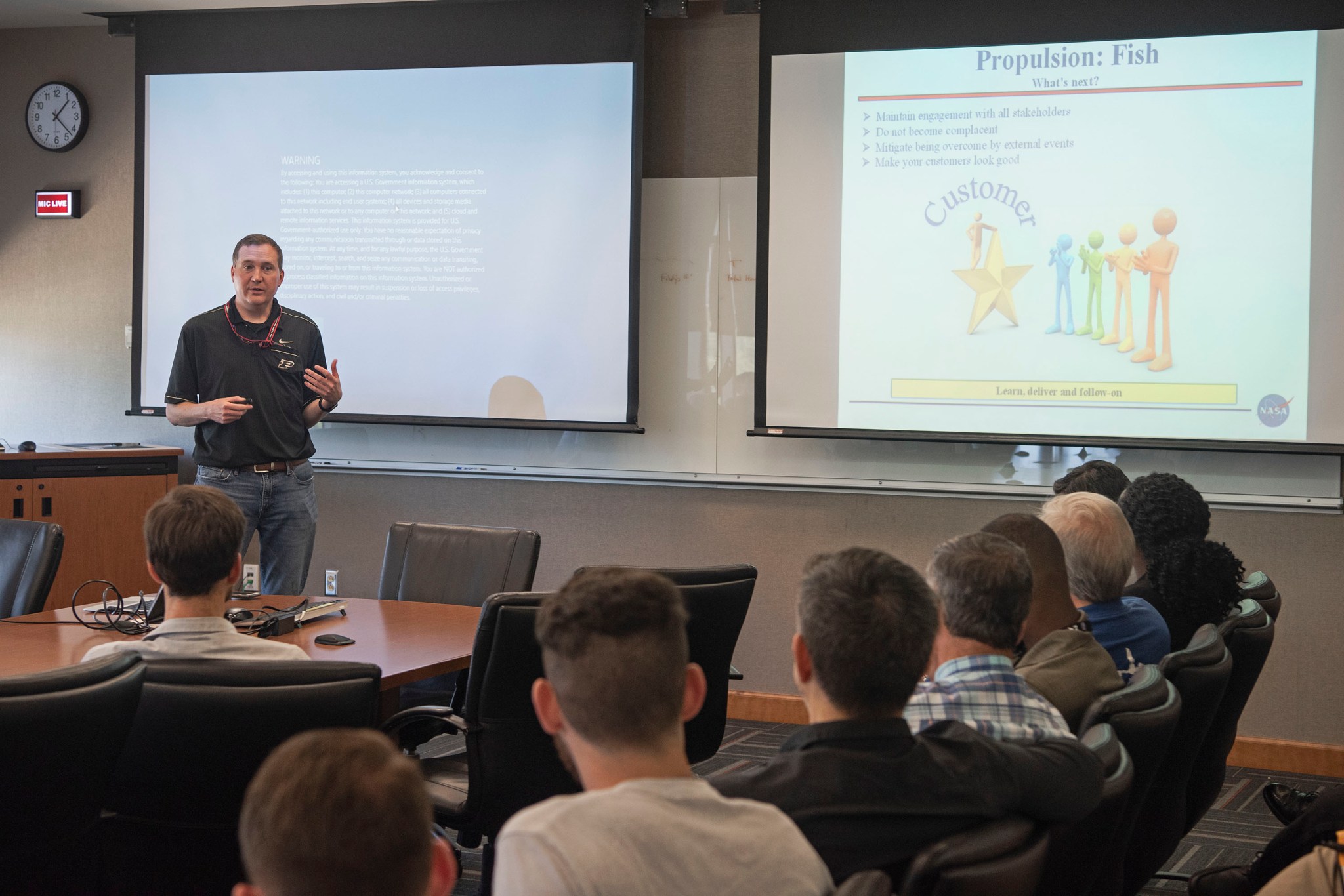
John Dankanich, the center chief technologist at NASA’s Marshall Space Flight Center, delivers Marshall’s monthly Tech Talk on Aug. 16 in Building 4220. Dankanich focused on how NASA team members can leverage center and agency resources to develop new, innovative technology. He spoke about the various funding mechanisms, best practices on how to engage management and how to prepare new technology for advanced stages. Dankanich also discussed Marshall’s technology portfolio and how the center is positioning itself for the future of space exploration. Tech Talk is a monthly series presented by the Marshall Center Chief Technologist’s Office. Sharad Bhaskaran, a mission director at Astrobotic in Pittsburgh, will present a Tech Talk on Sept. 12 on the company’s Peregrine Lander. Steve Altemus, from Intuitive Machines in Houston, will talk about his company’s lunar lander in a Tech Talk on Oct. 17. (NASA/Charles Beason)
This Week in NASA History: Large 3-D Printed Rocket Injector Successfully Test-fired – Aug. 22, 2013

› NASA Laser Communication System Sets Record with Data Transmissions to and from Moon
› SCaN History of the 2010’s
This week in 2013, NASA’s Marshall Space Flight Center successfully hot fire tested a large 3-D printed rocket injector on Test Stand 116. During the test, liquid oxygen and gaseous hydrogen flowed through the injector into a combustion chamber, producing 10 times more thrust than any injector ever fabricated using additive manufacturing, or 3-D printing. A commercial company manufactured the injector using selective laser melting, which produced a powder of nickel-chromium alloy, or Inconel, in layers to make the complex injector with 28 elements for channeling and mixing fuel and oxidizer in just two pieces. A similar injector tested earlier had 115 parts. The NASA History Program is responsible for generating, disseminating and preserving NASA’s remarkable history and providing a comprehensive understanding of the institutional, cultural, social, political, economic, technological and scientific aspects of NASA’s activities in aeronautics and space. For more pictures like this one and to connect to NASA’s history, visit the Marshall History Program’s webpage. (NASA)



























